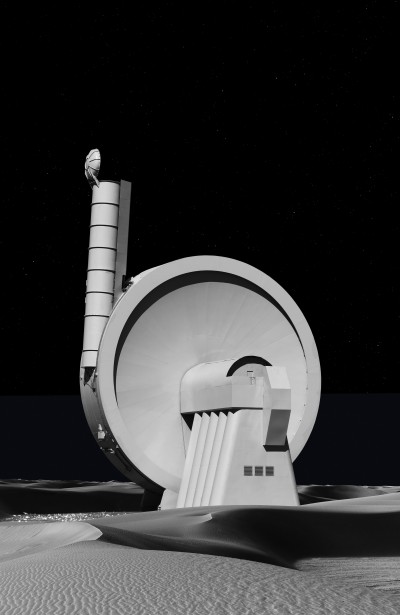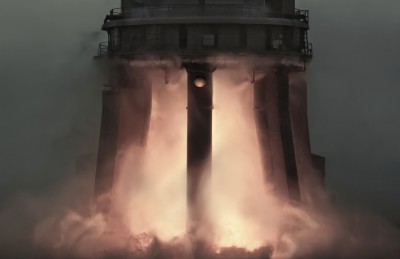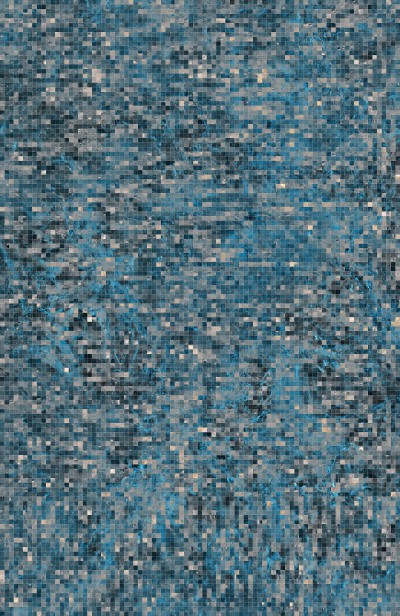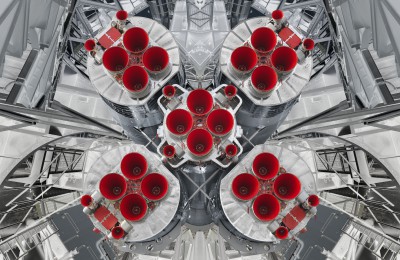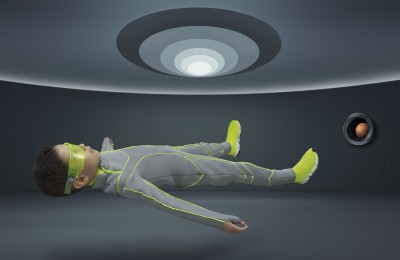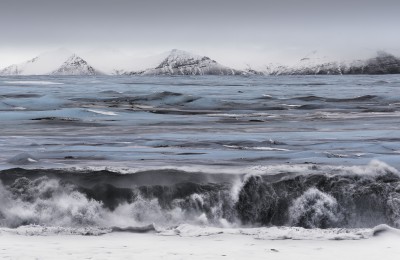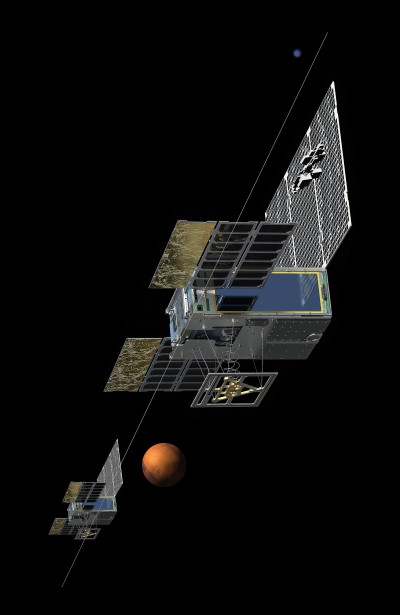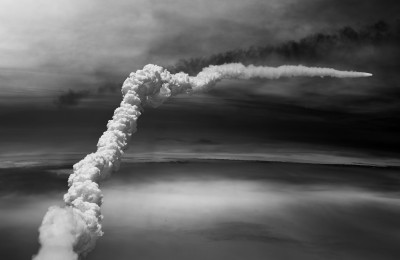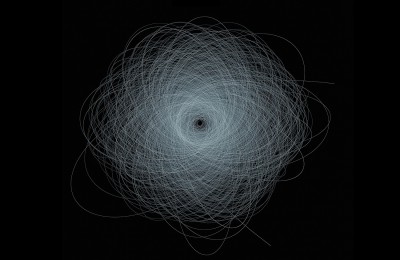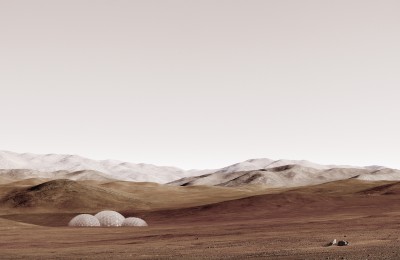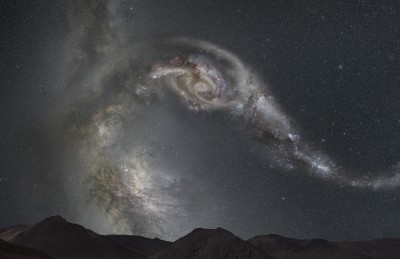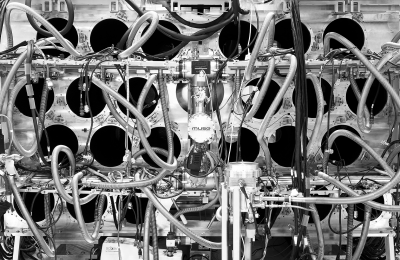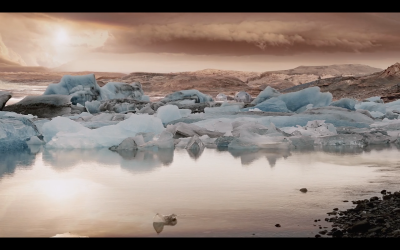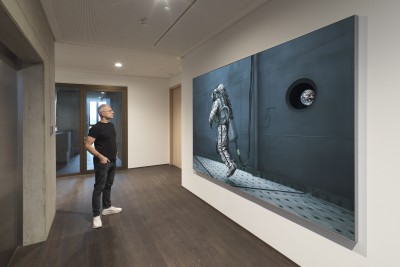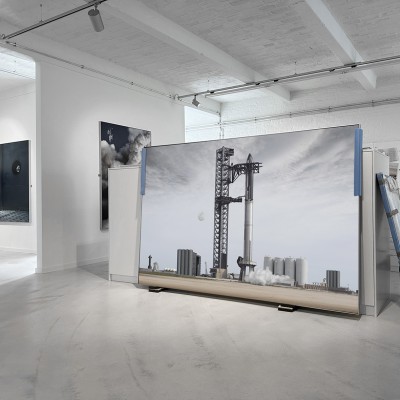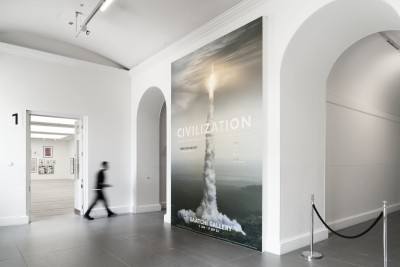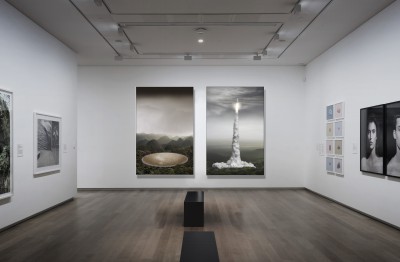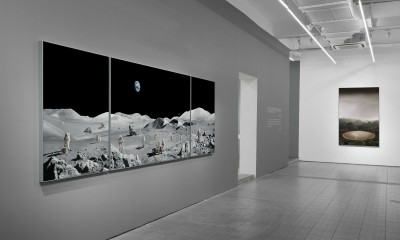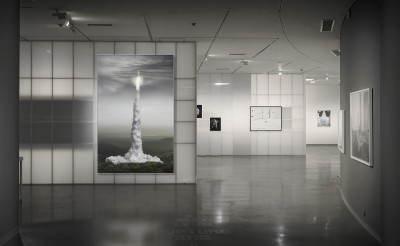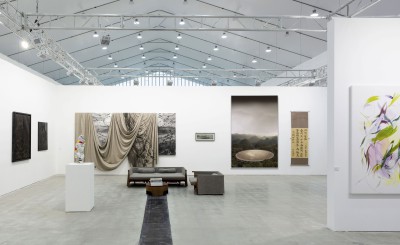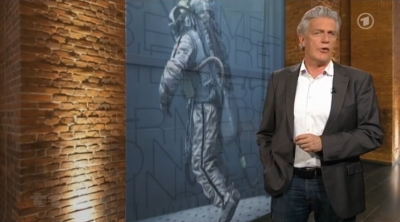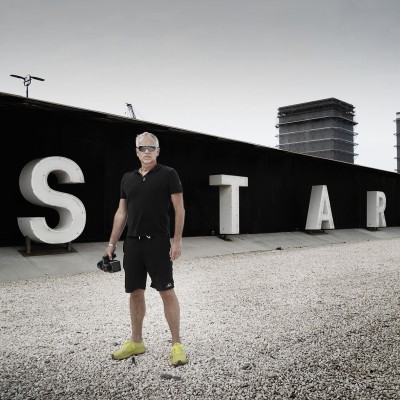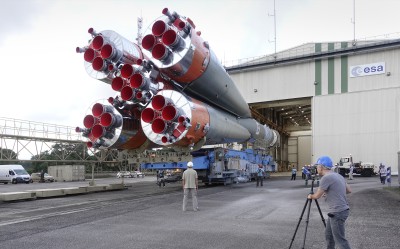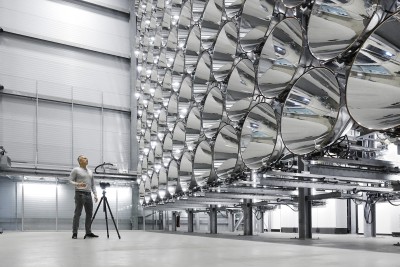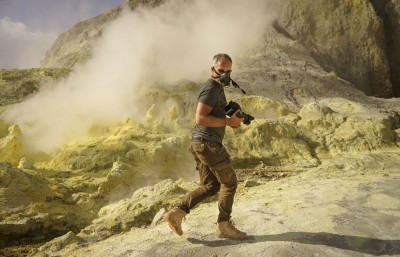
simulacrum
Format 1: 132 x 202 cm / 52 x 79.5 in, edition of 6 + 2 AP
Format 2: 67 x 102 cm / 26.3 x 40.2 in, edition of 6 + 2 AP
Hybrid photography, archival pigment print, aludibond, diasec, custom-made aluminium frame
The dialectic between simulation and reality is at the root of every kind of space research. Without simulation on Earth, there would be no real human activity in space. Materials, components, satellites and spacecrafts destined for outer space must undergo vigorous test processes on earth to survive the challenging conditions they will encounter there. To ensure the thermal and vacuum readiness of these systems prior to liftoff, they must first be subjected to the extreme vacuum and temperature of space to ensure that they can withstand them and perform impeccably under such harsh conditions. Extremely low pressure in space is a significant challenge for spacecrafts, thrusters, sensors, and other space components. But equipment is also exposed to extremes of temperature. The base temperature of space, not considering heat added by the sun, is about -270° C (-455° F), or just slightly above absolute zero. A satellite has the sun shining on its one side and shade on its other. These simulation test chambers reproduce the rapid temperature shift caused as orbital spacecrafts move in and out of sunlight.
The artwork “simulacrum” pictures the Large Space Simulator at ESA´s Test Centre ESTEC in Noordwijk, the Netherlands. The chamber is an extremely complex architectural structure formed by a vertical and a horizontal cylinder. The Simulator's high-performance pumps create a vacuum one billion times lower than our standard sea level atmosphere while liquid nitrogen circulating around the simulator approximates the cryogenic temperatures of space, and an array of powerful xenon lamps reproduces the unfiltered sunlight encountered in Earth orbit. Central to this work is the relationship between space, form and structure. Our visual grasp of the picture oscillates between the real object and its superordinate structure. The narrow perspective of the composition leads to the abstraction of what is visible in which the main element is the mirror in the middle of the picture formed of hexagonal parts. This mirror fragments the whole of our perception of space and conflates both background and foreground but also that space that cannot be directly seen. At the vanishing point of the composition floats a sphere that again reflects the surrounding area. The space simulator becomes a simulation of space. Or in the words of Jean Baudrillard: “The simulacrum is never that which conceals the truth – it is the truth which conceals that there is none. The simulacrum is true.”

